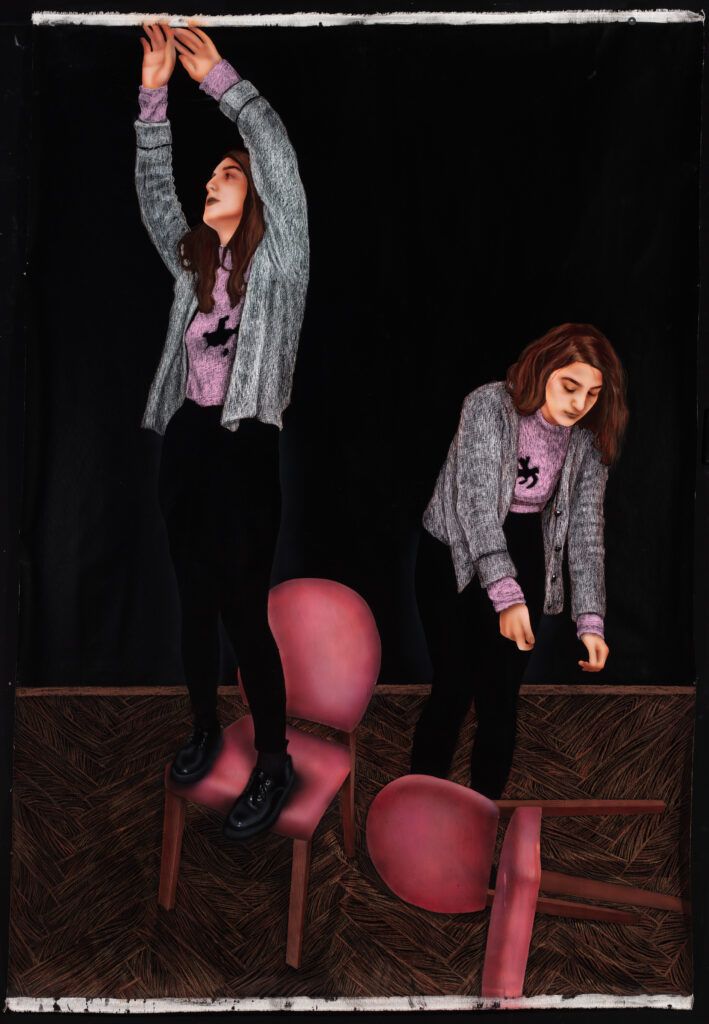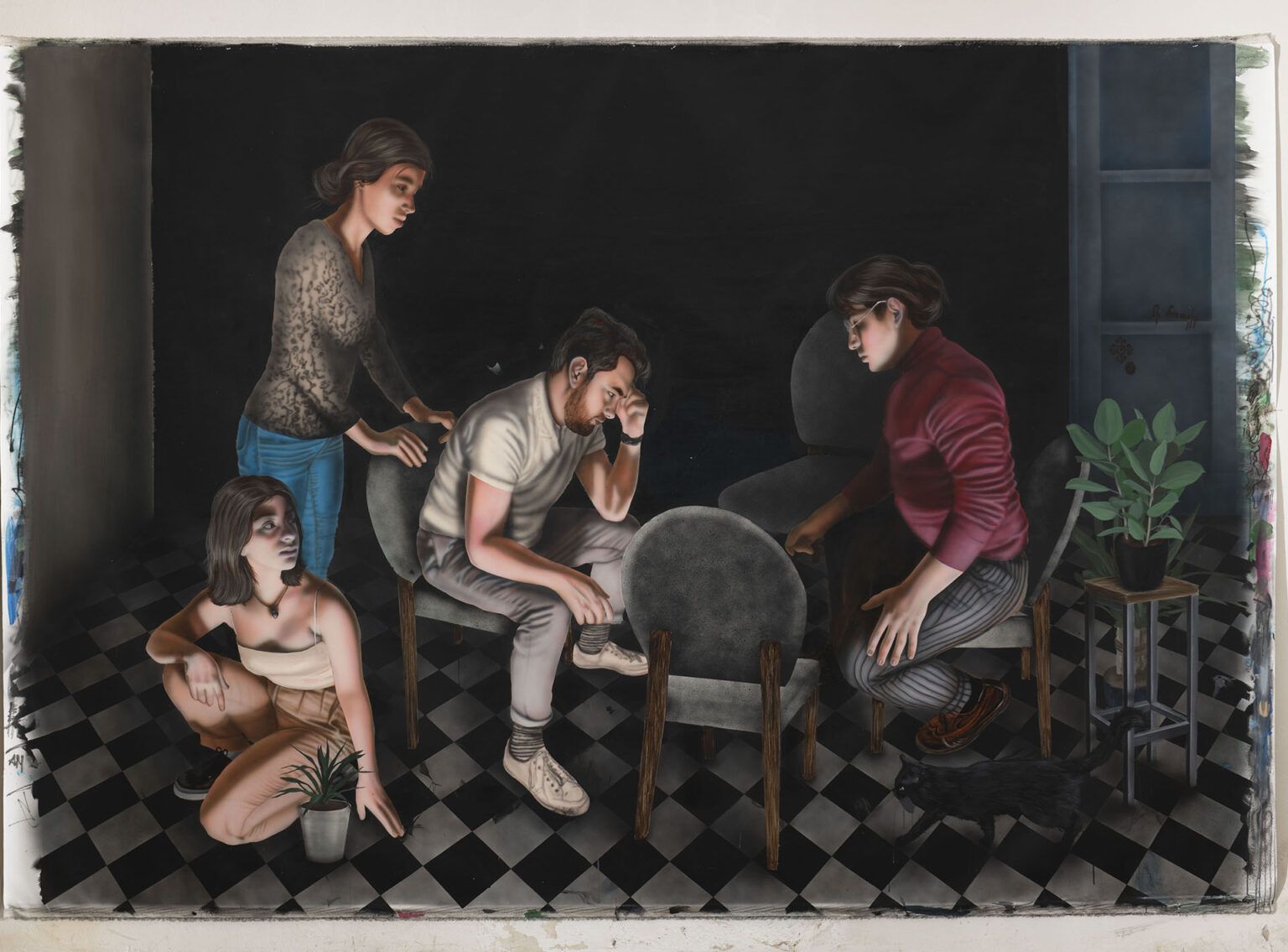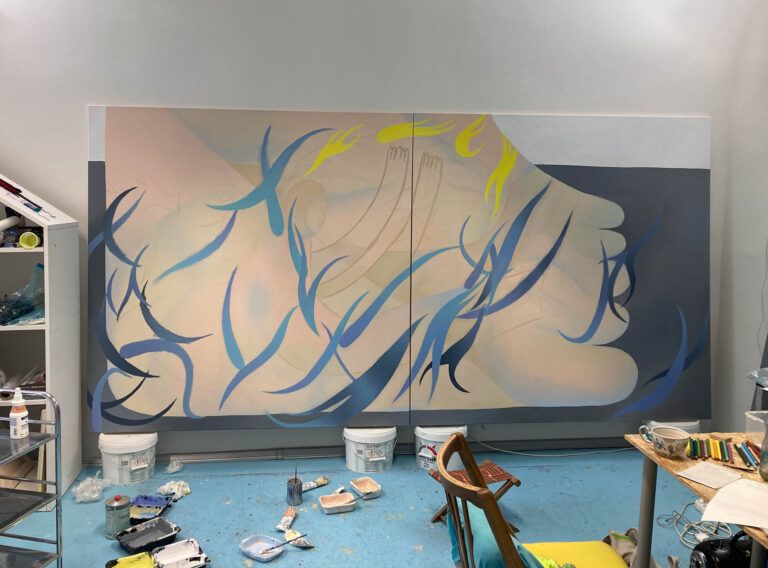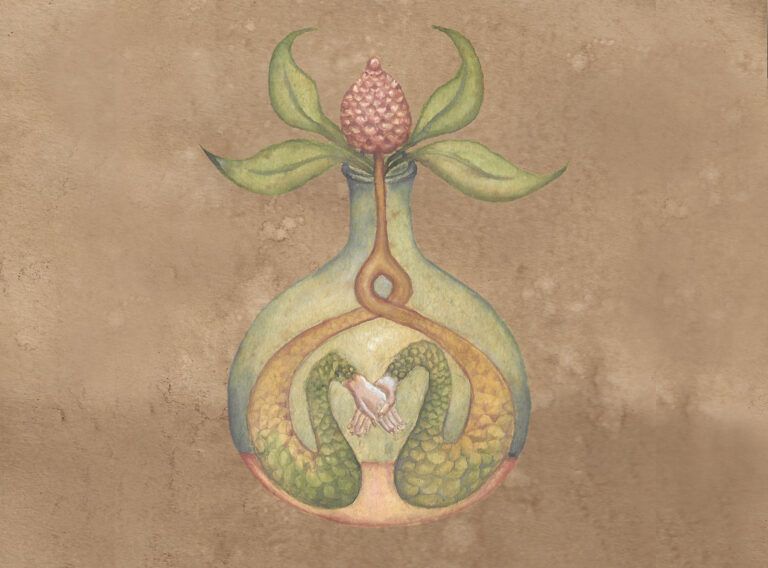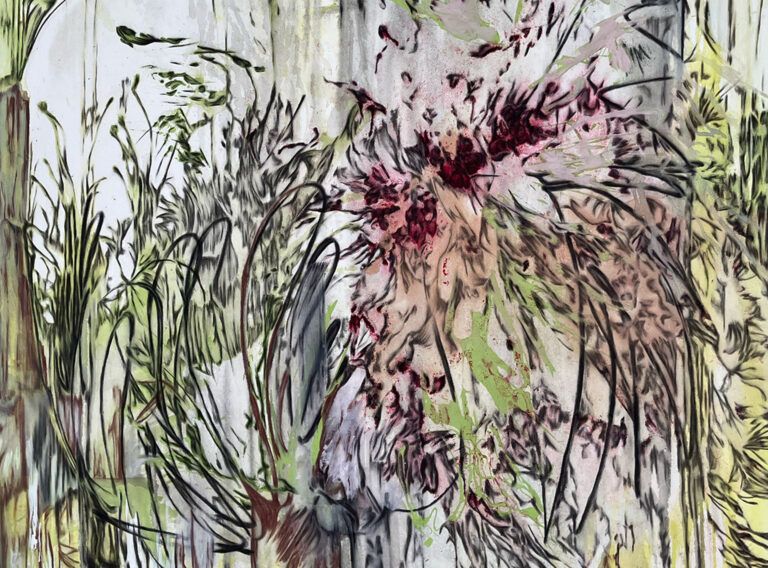In my work, I generally address two themes through my paintings. On the one hand, it is the individual dimension of human experience, which is focused on the issues and matters of ordinary life within the family and society. On the other hand, it is the dimension of social, historical, cultural, and political themes that transcend the framework and boundaries of diverse national cultures and world religions, and which inherently shape the nature of individual human experience. It has become increasingly clear to me that the cultural and value-based frameworks within which a person is formed influence, fundamentally and in a very intense way, behaviour, thought, beliefs, and all other personality traits which, in their totality, constitute a person’s unique and distinctive individuality. The main basis of my work is therefore the assumption that man is inevitably embedded in a certain social, cultural, and value-based environment in which he lives, perceives things around him, and develops and communicates with others. I am aware that this environment may be subject to change for each of us, therefore the important questions in my work are how to cope with this change, how to adapt, how to keep the original and how to adapt to the novelty. At the same time, I attempt to reflect in my work on how the collision of diverse cultural, national, and historical values can manifest externally.
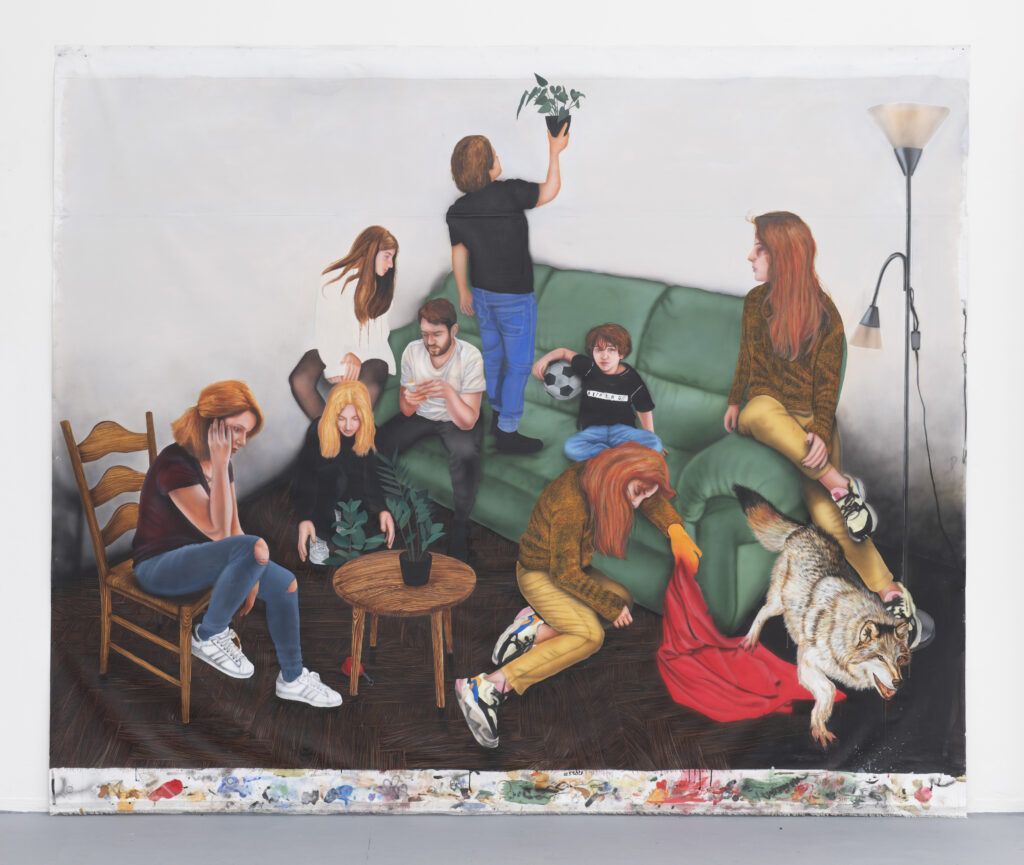
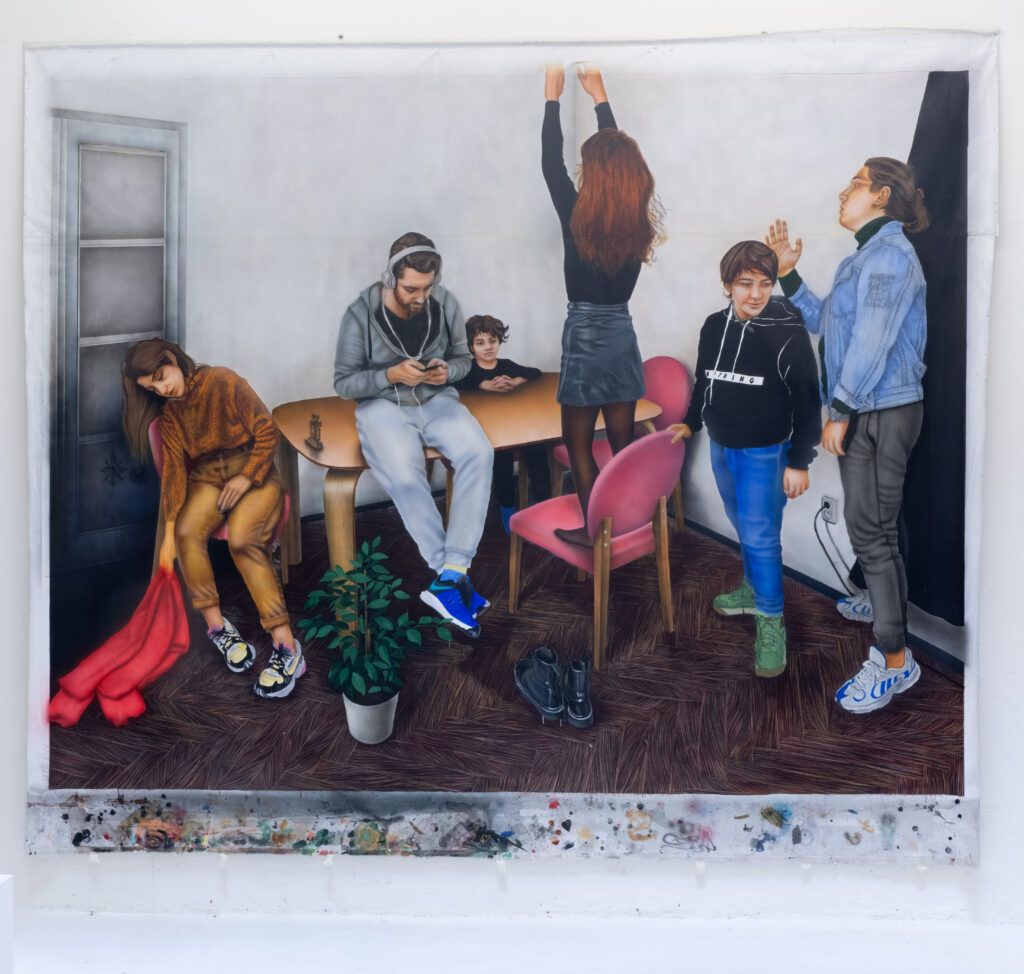
My objective has been to address the fact that different civilisations in today’s globalised and multicultural world are in some way clashing, colliding, and interacting with each other. The interaction of different cultures naturally has particular effects on the personal and social life of individuals who grow up, develop, and shape their personality in an environment of plurality and diversity of views and values. I know from experience that these people live their lives in an environment of constant contradictions of opinion and culture, which they perceive and try to deal with internally. I try to provide transparent insight into the otherwise purely private sphere of human experience, which is influenced by the multiplicity of cultural and social environments against which the personality and inner identity of the individual self are formed.
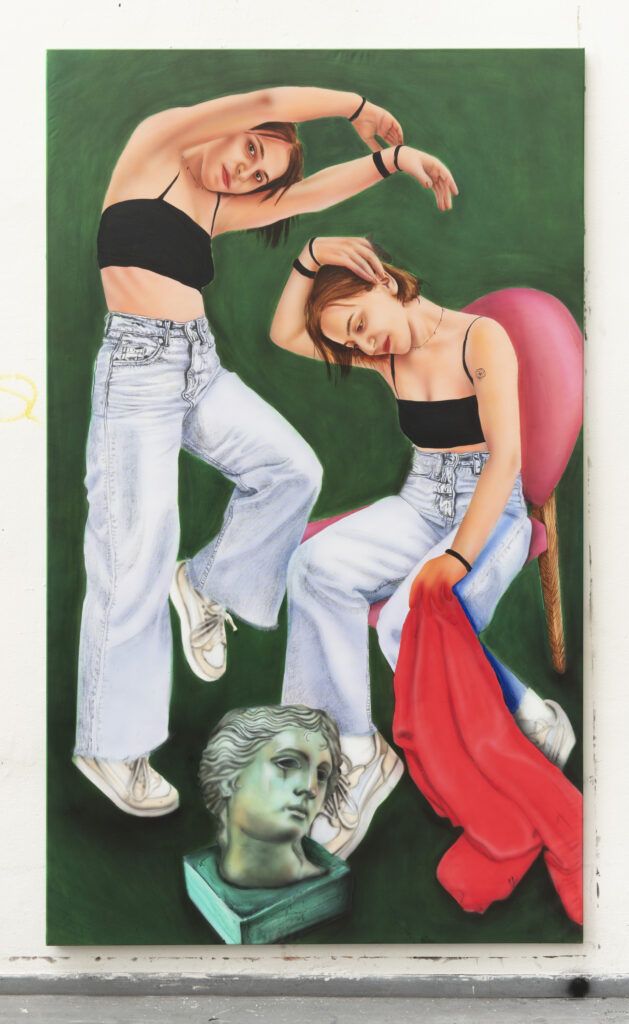
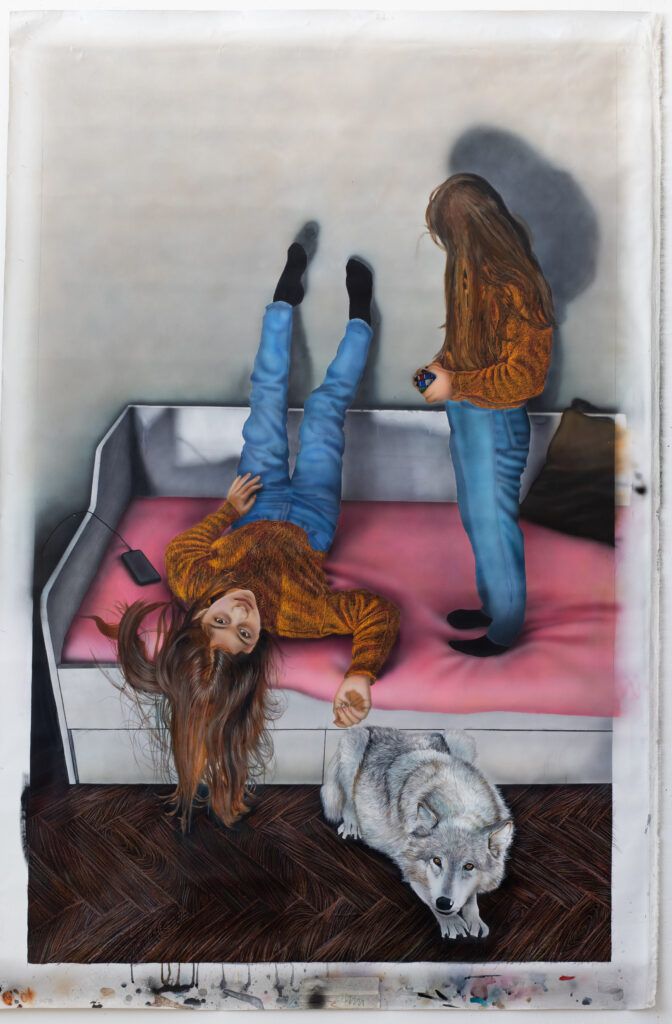
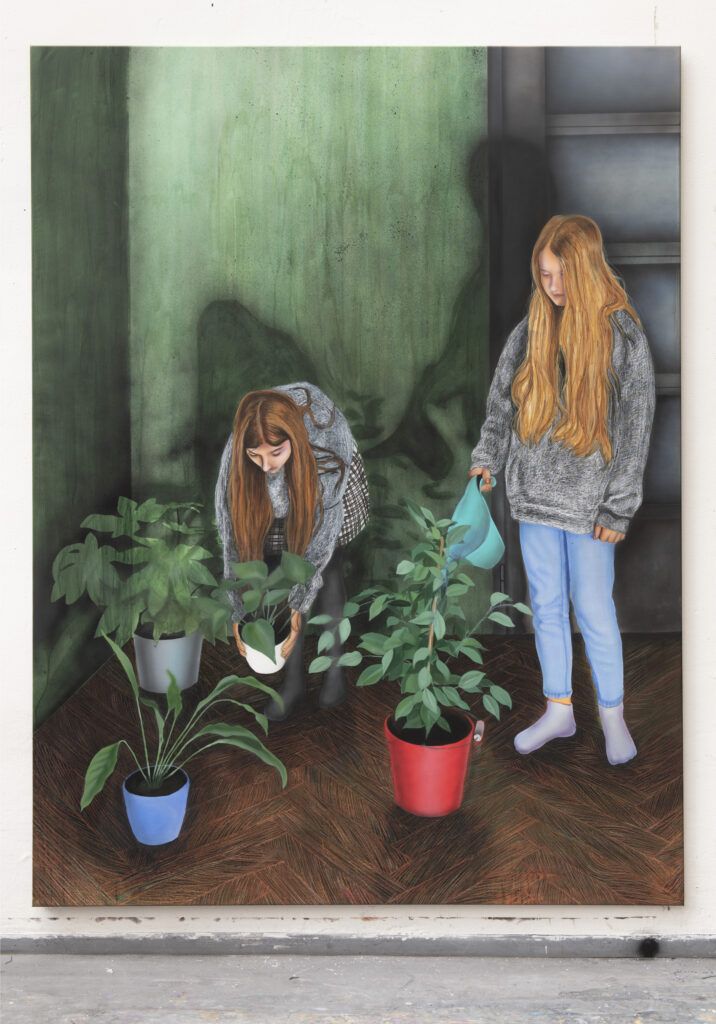
This problem of conflict among diverse cultures and value-based perspectives became even more pressing for me internally when the Nagorno-Karabakh war flared up again in September of 2020. It made me realise the extent and depth to which my life is interwoven with the experience of cultural and national diversity, and the intense impact this diversity may have in my daily life. It was a continuation of the war conflict, as a result of which my parents decided to leave their native Armenia and emigrate to Europe with the vision of a more promising future, at least for future generations. The decision to leave everything behind and plunge into a completely new life brought with it the inevitable duty and responsibility to come to terms with the uncertain and largely completely unfamiliar cultural environment one was confronted with. These life stories are part of the larger story of the history of the Armenian nation, which tells of the cultural heritage of the ancestors, but also of the historical experience of the Armenian genocide in the early 20th century and the suffering in the context of the ongoing struggle for the very existence of the nation. However, this story is not something distant, it is not a novel that we read in order to detach ourselves from our daily lives, but it is a reality that directly and immediately affects the lives of all Armenians. Within this story, I am aware of the themes and motives that I try to confront through my work with the values of the European civilisational and cultural framework and the reality of everyday life. At the same time, I try to ask what this story will tell in the future.
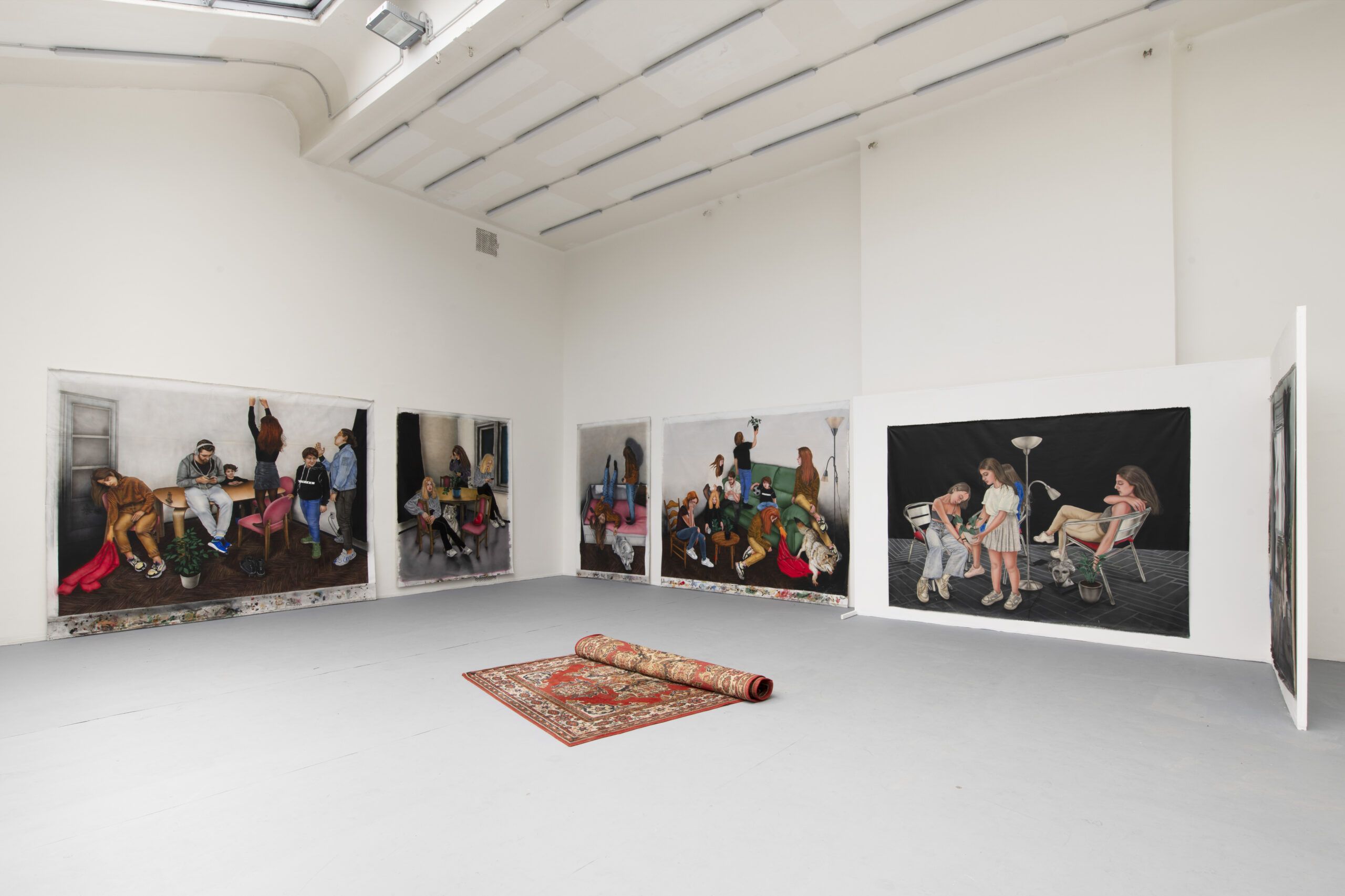
Although I am deeply influenced by personal experience on the issue of Armenian migration, I am aware that this is a global issue that goes far beyond the scope of a single nation-state and has deep historical roots all over the world. People leave or even flee their homes for many different reasons; for some, it is a way out in search of a more promising future, others do so in an attempt to avoid war. In today’s world, where the need for international protection of fundamental human rights and freedoms is so often emphasised, migration is also driven by political persecution. In my view, it is clear that migration and refugees affect all of us, even though the perspective from which we view these issues may be fundamentally different.
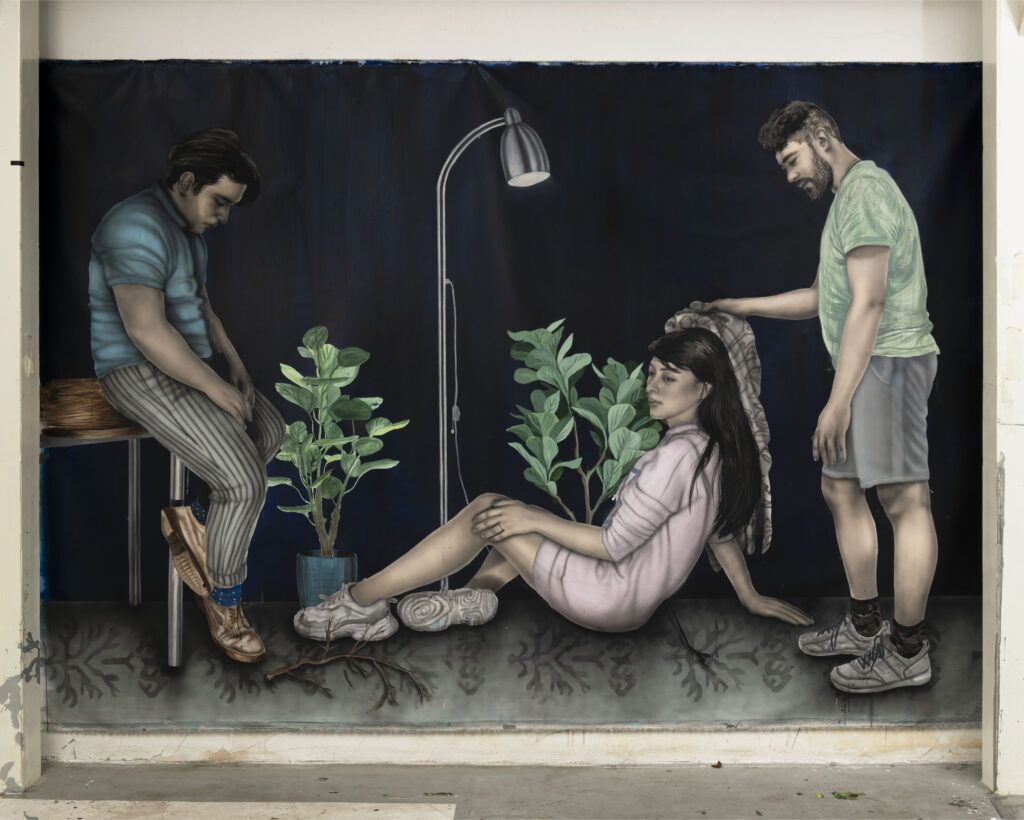
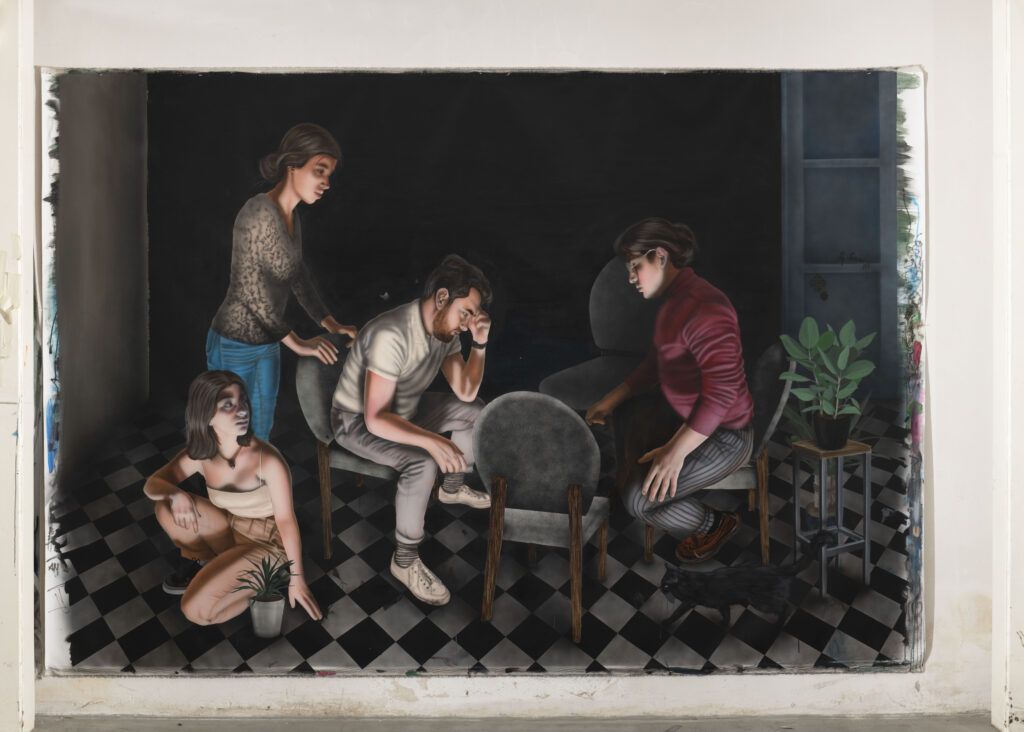
The question is, how can such a cultural‑value clash manifest itself in terms of individual human life? For sometimes one feels as if one exists on the borderline of different realities. One day one lives a story whose plot only resembles an everyday banality. There is nothing to question because everything is self-evident. But suddenly, without expecting it, something can happen that completely disrupts the feeling of everyday “banality” and envelops us with the weight of utter uncertainty. Everything that was a daily habit becomes an irrelevant past that we no longer remember or want to remember. What was perceived as an everyday duty becomes an unpleasant memory that can no longer bind us. Our whole existence then becomes unquestioningly fixed on the only possible reality, namely that which, only a short time ago, might have been absurdly distant to us, and which is still alien to many people in our surroundings. This becomes an almost empty space for us, in which we perceive only those who share our pain and grief ‑ it is those people around us who ask the same questions without having enough answers, it is those close to us who, with a sense of injustice and insecurity, remember ancient historical injustices while living in the present of the day with the knowledge of where they really came from. When a third person peers into this space with interest, it fills us with genuine joy, gratitude and, above all, hope that reinforces the idea that we can find something other than absolute indifference and personal alienation at the border of very different cultural realities.
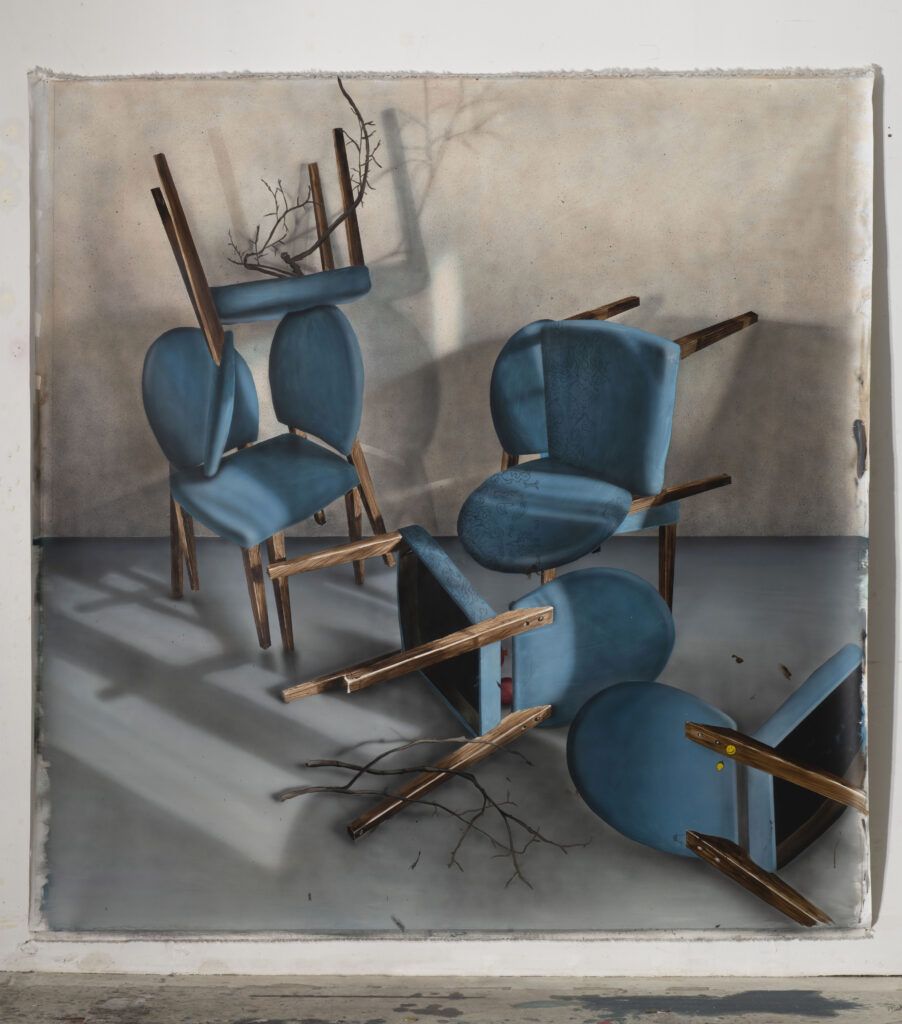
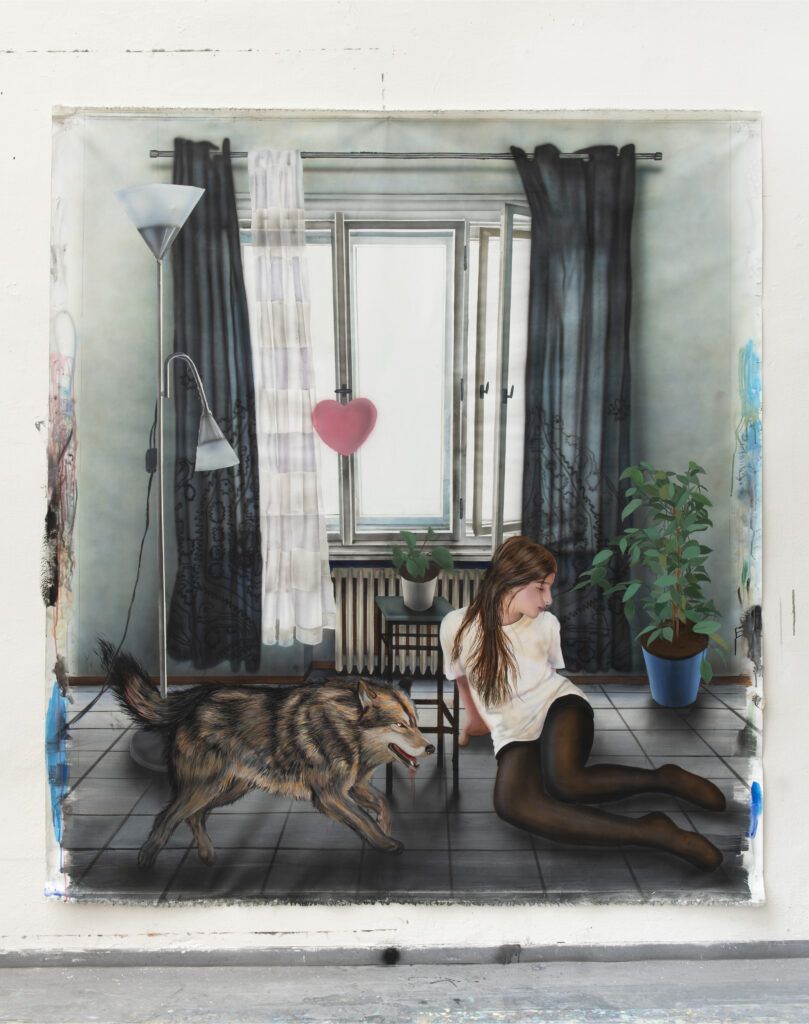
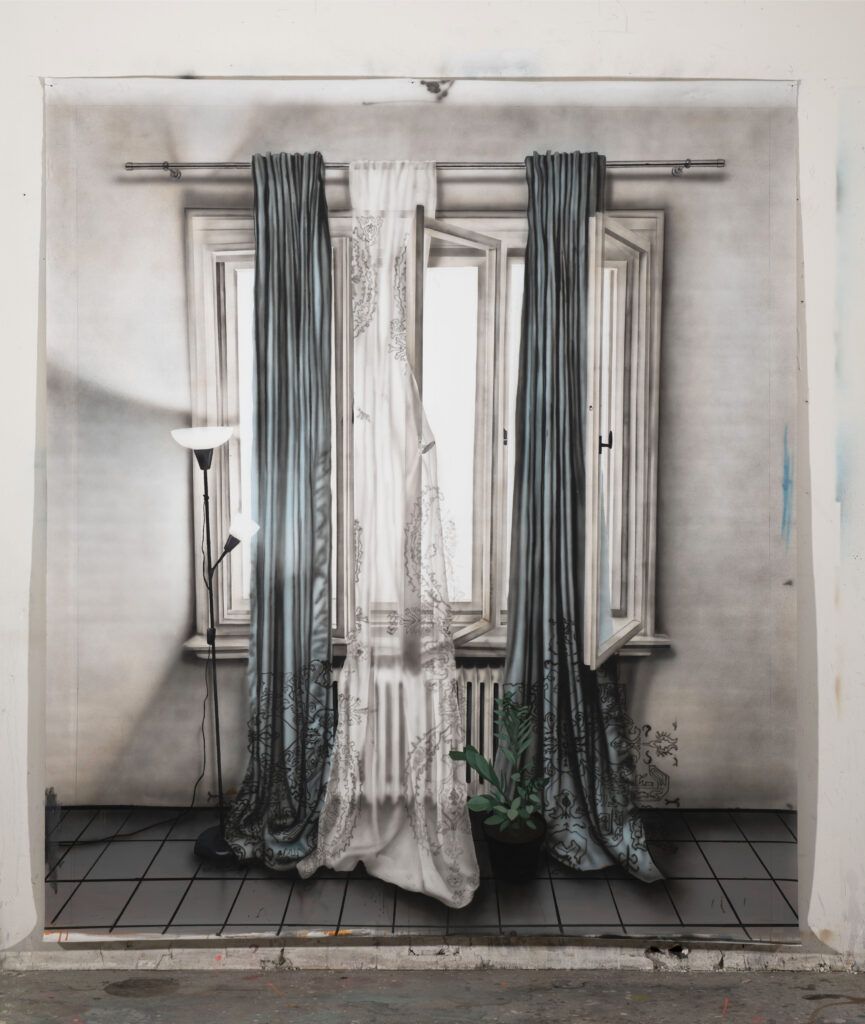
My objective was to avoid that the themes and problems I am dealing with would be described or illustrated in the paintings in some way; it is not meant to be an empty monologue, but rather a narrative of content hidden behind the every day “banality” – a kind of thought contemplation that takes place covertly in the second plan of the painting.
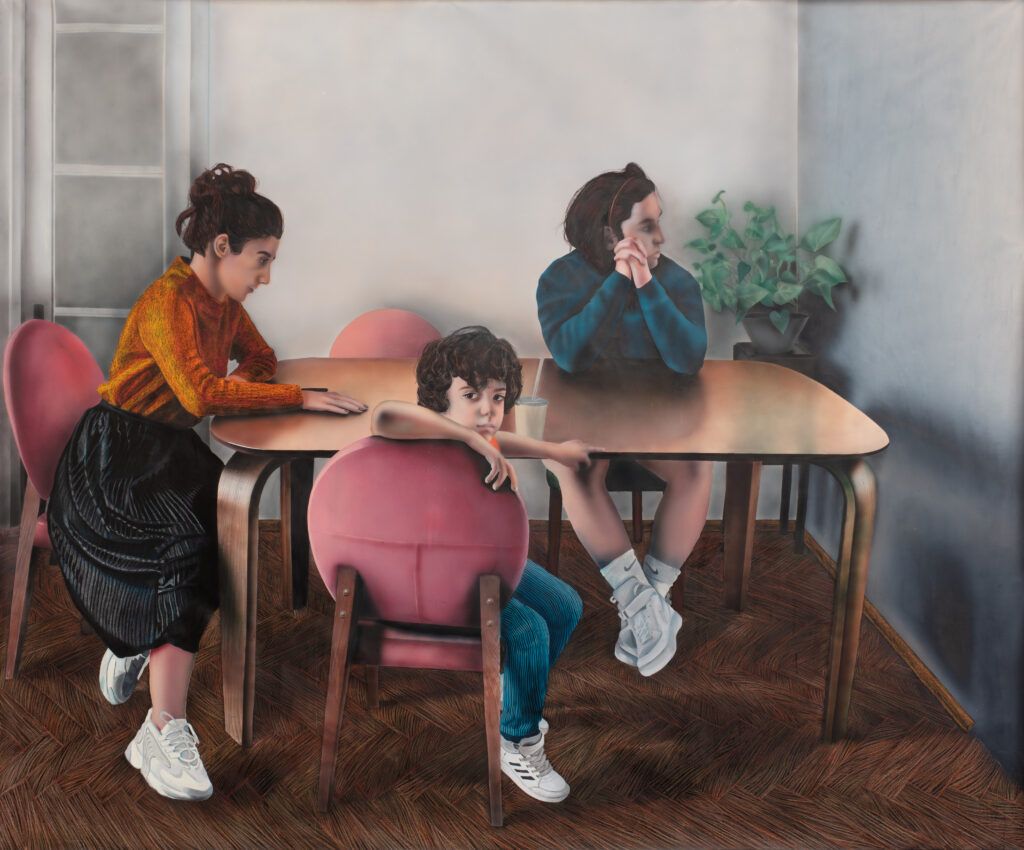
I use the method of appropriation as a means of communication, which allows me to insert individual culturally coloured elements or ideas into the image, whether they are concrete objects, symbols, or writing. I then place these specific objects in the space of my personal and family life without disturbing their original connotation of meaning. By appropriation, I thus show in the space of everyday life references to the cultural consciousness of the Armenian people everywhere – I refer, for example, to khachkars, which remind us of the stone monuments engraved with a cross that refer to the medieval art of Armenian Christian culture, or to the figure of Anahit, who was the goddess of fertility, health, and wisdom in Armenian mythology. Often confused with the Greek goddess Aphrodite, the statue of Anahit is part of the art of the Hellenistic period, a historical epoch during which there was an intense intermingling of Greek, Roman and Oriental cultures. A characteristic feature of the Hellenistic period was the spread of Greek culture far to the east and its encounter with the cultures of surrounding ancient peoples, with mutual influence and adaptation.
Some answers may perhaps be found in the consensus we seek in conditions of difference of opinion and value. In a multicultural or ethnically diverse environment, we often encounter conflict, the starting point of which may be understanding and tolerance. Although I have been dealing with this topic for several years, I cannot offer more answers than questions. The same question is always being asked at the border of different cultural realities: What lies beyond the horizon? The current situation in Armenia makes us wonder how thousands more Armenians will cope with the challenges of the often-anticipated migration. How will millions of other migrants everywhere face these challenges? What will be the consequences for those who, far from their homeland, feel alienated from themselves? I have no choice but to keep asking and hope that art will help me answer some of these questions for myself, and perhaps for people who will be interested.
